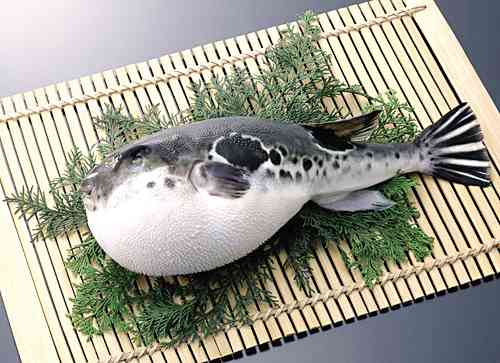Prized but deadly delicacy demystified
For years now, we’ve known that the fugu or blow fish, is regarded as a prized but deadly delicacy in Japan, because the poison in its liver is strong enough to kill adult humans in only a few hours.
Despite this fatal reputation, however, gourmets with money to burn risk their lives to occasionally partake of the verboten delicacy, for sheer excitement’s sake!
That tantalizing but scary information has raised many more follow-up questions, but TV cooking shows, even those of the “extreme” kind, haven’t answered them.
Happily, just last month, a cooking show on NatGeo finally bothered to devote its entire telecast to the heretofore mysterious and deadly culinary counterpart of Russian roulette!
The special coverage was detailed and clear, because the show got its answers from experts in Japan, both chefs and gourmands, who revealed heretofore hidden or even secret facts, related to the risky fugu craze:
Article continues after this advertisementFor a cautionary intro, the show shared that, despite many official rules and restrictions, around 50 people still die after ingesting fugu feasts in Japan each year!
Article continues after this advertisementThat’s a chilling statistic, especially when you reflect on the ironic fact that most people eat to live—while those 50 hapless gambler-diners end up doing the exact opposite!
The government regulations that have kept the fatalities down to the absolute (but still unacceptable) minimum include taking a two-year, required specialized course in handling and cooking of the dreaded and yet prized fugu.
Only cooks who pass the official certificate course are allowed to “de-poison” the otherwise “fatal” fish—and its sobering to learn that two-thirds of exam takers fail the course!
Fugu, once rendered safe, is prepared in various ways, as soup, grilled or sashimi treats—and a single fish can cost $150!
No wonder even wealthy diners can afford to indulge in the “life-and-death” treat and challenge only once a month, or when they’re dining on expense account.
Aside from the “thrill” of it all, what does a fugu feast have to offer in terms of unique flavor?
Diners admit that its taste is subtle and can even strike some palates as bland, unless spiced up by some chefs’ culinary flourishes.
For instance, some gourmets love it most when a slice of fugu is savored in a hot glass of sake wine, along with some exotic (and also expensive) herbs.
In their exceedingly venturesome and fatalistic view, that “extreme” culinary experience is so unique that it’s—to
die for!
If you ask us, however, fugu is a delectably deadly feast that we are willing and even eager—to forego!
